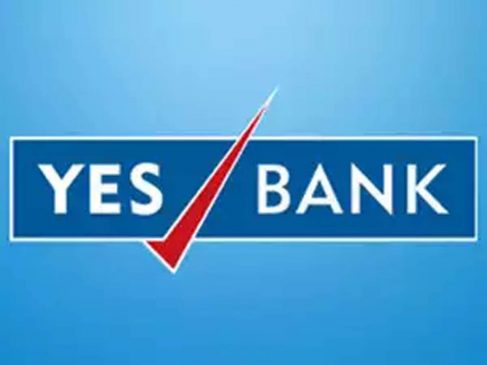The recent collapse of the Silicon Valley Bank (SVB) and the emergent scramble to rescue it grabbed global headlines. A seemingly small California-based institution had the potential to deal a devastating blow to the global financial system, reminding of the situation during the 2008 crisis. While the Federal Reserve salvaged SVB through a last-minute plan, the resultant chaos is expected to prevail in the system for long. A recent article in The Financial Times illustrates the situation in the US. A somewhat similar situation was seen with Credit Suisse in Europe.
Also Read–BoB Q4 loans rise 19%, deposits grow 15%
These events coincided with the third anniversary of a similar event in India—the rise, fall, and notable rescue of Yes Bank. Then, this financial institution was on the verge of collapse due to its rapidly deteriorating financial position and issues relating to liquidity, capital crunch, bad loans, governance and other critical parameters.
Also Read–HDFC Cuts MCLR On Selected Tenures; EMIs To Go Down – Check Revised Loan Rates
While the situation may have led to a total bank run, the Union government, the Reserve Bank of India and public sector banks worked together to prevent a contagion effect. As a result, Yes Bank was rescued by a consortium led by the State Bank of India (SBI) in March 2020, with the approval of a scheme of Rs 10,000 crore.
Also Read–Gold prices today: 10 grams of 24-carat sold at Rs 60,420; silver at Rs 76,300 per kilo
This was unique in many ways. It was the first instance where a large private sector bank was rescued—earlier, the RBI had generally only bailed out public sector banks that had run into trouble. The size of the Rs 10,000 crore bailout package also reflected the severity of the crisis at Yes Bank.
The RBI rightly recognised that any bank is highly sensitive to even small sentiment changes during the peak of a crisis. The RBI, therefore, acted swiftly, took control and announced restructuring scheme on March 6, 2020. The RBI must indeed be complimented for tackling the complex situation promptly and deftly while achieving smooth coordination between multiple parties
Also Read–Indian Railways to run on Made in India wheels, RINL set to produce 55,000 wheels from its UP plant
The rescue operation was carried out without any loss to depositors except for capping the daily withdrawals initially. Any loss to Yes Bank’s depositors could have triggered a broader crisis of confidence in the Indian banking system. The rescue plan was therefore carried out to safeguard the interests of all stakeholders and was formulated keeping the interests of depositors, creditors, employees, and shareholders in mind.
Also Read–Axis Bank Revises Interest Rates On These FDs, Check New Rates Here
This was quite different compared to similar cases globally, where the rescue was often at the expense of other stakeholders, including depositors who might have to take a haircut on their deposits.
Adding a further layer of complexity to the rescue was the unprecedented Covid-19 pandemic that beset the world at the beginning of this decade. This created significant challenges in rescuing Yes Bank. Moreover, as the pandemic triggered a global economic slowdown, Banks faced liquidity issues affecting the confidence of investors willing to inject capital into Yes Bank.
The unavoidable lockdowns and travel restrictions imposed by the government made it challenging to coordinate the rescue exercise. In addition, the pandemic disrupted the banking sector, where they had to offer loan moratoriums and restructuring schemes to their customers, putting additional strain on their balance sheets. The pandemic also posed a risk to the safety of bank employees and customers, making it challenging to inspect bank branches or conduct on-site audits physically.
Also Read–NSC 7.7% interest calculation: Turn Rs 1 lakh into Rs 1.4 lakh with tax benefit!
Despite all these challenges, the government and the RBI successfully rescued Yes Bank and prevented a broader crisis in India’s banking sector. The consortium injected much-needed capital into Yes Bank, helping to stabilise its financial position and restore depositors’ confidence.
Three years later, Yes Bank is steadily recovering under its new management. It is in good financial condition, with a net profit of 1,066 crore in FY22. As per its last annual report, the capital adequacy stood at 17.4%, with loan sanctions worth Rs 70,000 crore and non-performing assets of 4.5%.
Learning lessons from the crisis, the RBI has taken several steps to further strengthen India’s banking sector. This includes setting up a Committee to review the functioning of asset reconstruction companies (ARCs) and creating a framework for resolving stressed assets.
While Yes Bank has been rescued, a few questions remain. Bondholders challenged the decision to write off the Additional Tier 1 bonds worth over Rs 8,100 crore before the Bombay High Court. A division bench quashed and set aside this decision citing various legal and technical reasons. Yes Bank has now challenged this decision by appealing to the Supreme Court. Everyone will closely watch the outcome of this matter, as it may create additional obligations for Yes Bank.
We are living in unprecedented times. It took just a few weeks for the four-decade-old Silicon Valley Bank of US to change from a thriving institution to be on the verge of collapse. In India, where economy is on an upswing and growing rapidly, and banking systems expected play a major role in the process, the government and regulators keep a close watch to avoid any meltdown. It is hoped that the economy will continue to have a smooth trajectory to attain its projected $5 trillion level soon.





































